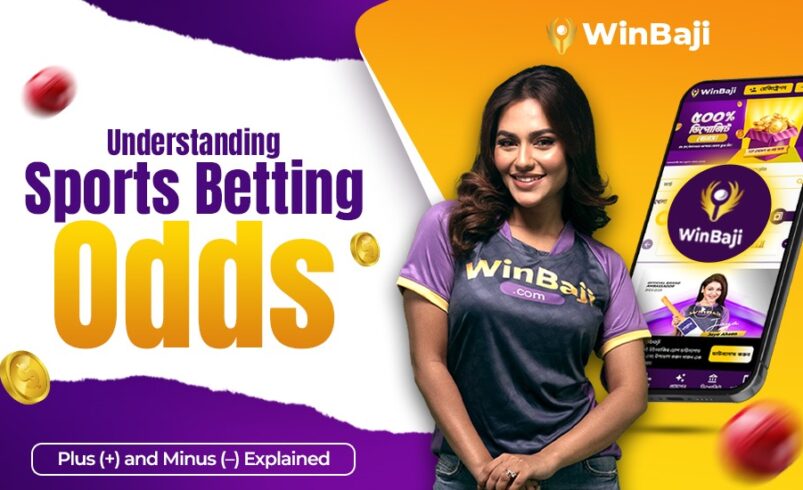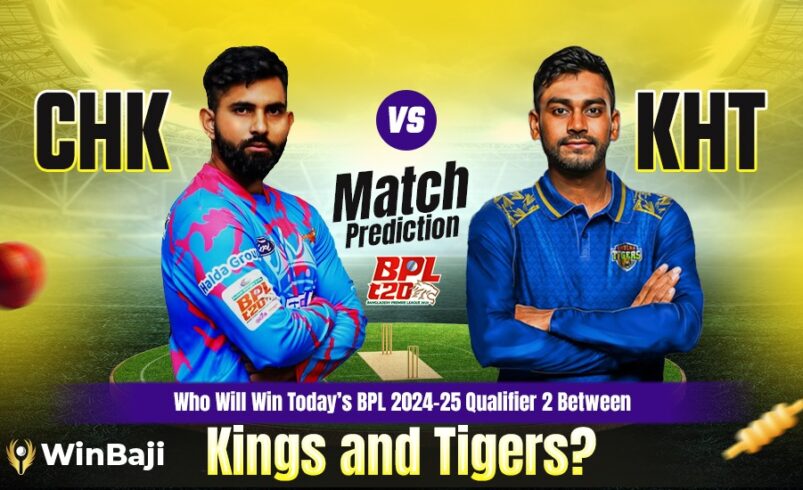Understanding Sports Betting Odds: Plus (+) and Minus (–) Explained

In any wager, sports betting odds are the most fundamental nucleus. They can reveal to you all that information needed about how probably an event would happen, and, most important, become the means to finding out how much you’ll recover if your chosen bet is able to materialize.
Read More: Mahipal Lomror Prioritizes Playing Time Over Pay in IPL 2025 Auction
There are three primary forms of expression for the odds in sport betting: American, decimal, and fractional. All describe the same but in different languages.
In American odds, your potential profit is expressed relative to a $100 bet while, for decimal odds, your simple multiplication factor for the stake is to the front. Fractional odds express your prospective winnings as fraactions.
It is the page exclusively dedicated to US sports betting odds so that you will know the way it actually works in the manner that can be understood with the bettor in such a way that understands how to actually use it rightly.
Check Out: WinBaji Sports Betting – 100% Welcome Bonus for New Players
Basic Structure of Odds: Rest of The Standard Odds Structures, How One Can Identify His Underdogs for Favorites; little tips for enhancing your sharpness in betting approach.
Sports Betting Odds: What Do You Know
Types of Betting Odds: Learn fully about all kinds of odds that can be observed in sports betting, including fractional, decimal, and American moneyline odds.
Reading Odds: Learn the different forms of odds to know which possible payout your wager may achieve.
Understanding the Calculation of Probabilities: Understand how the implied probabilities of an event’s outcome represent odds and how to calculate them for any odds.
Odds Used in Bets: During making bets, know the time when the odds would decide the possibility of winning a bet that might only be achievable when the risk considered is balanced with the reward anticipated.
Complex Odds Sensitivity: See how the bookies had structured their odds and how the odds could change based on the betting behavior one could exploit when planning over the bets.
What Do + and – Signs Represent?
In American odds, + represents the amount that will be received from a bet made on $100, while – represents how much must be risked for the chance of getting $100. The favorite will usually start with a minus (-) and the underdog starts with a plus (+). For example if Dallas is at -150 that makes Dallas a favorite, whereas at +175 it makes Arizona the underdog. A bigger negative number means a bigger favorite, but that isn’t always true, so look carefully!
How American sports betting odds work
The base amount at American odds is always $100. This usually is a either positive or a negative number with this providing relevant details regarding your potential win and/or loss.
Example; if you were to gamble money on the Los Angeles Lakers where the probability would be +200. In that case your $100 bet will be rewarded with $300. How much is returning to you is simply the sum of your $100 stake and $200 profit.
For example, at a -200 bet on the Philadelphia Flyers, you are risking $200 to win $300. This is where your stake is returned to you with $100 added profit. American odds will thus uniquely express probability and risk differently to other standardized formats for odds, whether that be fractional or decimal odds.
Knowledge of Implied Probability
The money line odds are only set by the sportsbook, or by a sports betting application, which change with each play. This is implied probability, the percentage chance of a particular event by the odds set.
Knowing this lets you see how likely the house believes the outcome will occur, then to measure that to the analysis you have available.
For the application of American odds, one can calculate the implied probability with the application of the formula for negative as well as for positive odds;
For negative odds: Odds / (Odds + 100) * 100
For positive odds: 100 / (Odds + 100) * 100
For example, if Sacramento Kings have +300 over the chances of winning in the Pacific Division then you calculate 100 / (300+100) * 100. That simply means your bookie feels that it’s 25% likely the Kings will go first in the Pacific Division.
If the Los Angeles Clippers have a -110 then you calculate 110 / (110+100) * 100 meaning 52% winning chances for it.
Other types of odds have different formulas for computing implied probability. “To calculate your implied in fractional odds 100 / ((Numerator / Denominator) + 1), you can use,” and “calculate in decimal odds by dividing 100 by your odds.”
Calculate Payouts using American Odds
If the odds for the event is positive then depends on the how much you win or lose.
Example If you bet a $50 that Kansas City Chiefs will win AFC West with an odds of -200. Therefore, decimal form of odds is 100/ + 1= 1.5.
Multiplying by your stake at $50, you will see that the total payout at $75 where $25 is profit and your stake is $50.
For positive odds you would divide the odds by 100, add 1 and then multiply that number by your stake. So in this case, a $100 bet on Detroit Tigers to win the World Series at +300: 300/100=3 Add one to get 4 and multiply by your stake to get your return which, in this case, would be $400. Again, your return is the sum of your $100 bet; thus, your profit would be $300.
Types of Sports Betting Odds
There are primarily three different formats of betting odds, which are American, decimal, and fractional. All three will represent the same odds but with a different emphasis. Each format expresses your potential return slightly differently.
No odds format is more profitable than the other. Each shows the same thing. Understanding the different types of odds format is crucial, so we’ve given an overview of the main formats below.
American Odds
This would come out in a format by default and with American odds and for the US sportsbook, and what always seems to work is setting the base as always at the $100 in placing a minus sign next to the favorite by the underdog a plus sign.
A positive value for odds, the number is the amount of profit that you can make from the $100 used. If the number is negative, the amount is the amount of what you need to stake to make a profit of $100.
Decimal Odds
Decimal odds are not that complex: price per unit of $1 stake. So if you stake $100 on LAFC winning MLS Cup at 16.00, you just multiply your stake by the decimal odds.
This means that if your bet wins, it will return $1,600 together with your $100 stake. Decimal odds are highly popular at European sportsbooks, though can be very useful for three-way markets and are appreciated by some as being easy to read.
Fractional Odds
The second most common format in US sportsbooks for placing bets on any sport is fractional odds. Representation with fractions is the type that shows odds in the form of fractions; 7/1 or 10/3 are some examples of fractional odds. In these, profit acquired is placed as the numerator while the stake required earning that profit as the denominator.
For example, a $20 bet on the New York Jets to win the AFC East at 7/2 would produce $90 total-your $20 stake plus $70 profit. A $15 bet on the Colorado Avalanche to win the Stanley Cup at 10/3 would produce $65-your $15 stake plus $50 profit.
To calculate your profit, multiply your stake by the numerator and divide by the denominator.
Key Concepts in Sports Betting
To fine-tune their strategy effectively, sports bettors must understand key betting concepts. From learning types of bets to understanding sportsbook commissions, getting familiar with such foundational aspects of sports betting is the key.
We have taken a look below at some of the vital elements of using an online sportsbook.
Understanding Point Spreads
Points spreads are a market available at most of the best US sportsbooks. A spread bet is a bet on the margin of victory rather than the outcome.
Typically available for football and basketball markets, your sportsbook will establish a favorite and assign a line. This line represents the required margin of victory in order for a bet on the favorite to win.
For example, if it’s a game between Dallas Cowboys and San Francisco 49ers and your sportsbook shows the Cowboys to be favorites, with a line of 3.5 on them, this will be seen as Dallas Cowboys (-3.5) in your slip to place the bet.
For your bet to win, Dallas needs to win by more than a field goal. In case San Francisco win or Dallas win by three or fewer points, then your bet would have been settled for a loser.
Sportsbooks, similar to the FanDuel Sportsbooks normally present spreads in increments of 0.5, often referred to as the hook so that such an exact tie cannot occur.
Nonetheless, sometimes the retail sportsbook will offer the point spread as a whole number. In that situation, if you place your bet on the spread quoted and the margin of victory is equal to the spread, the sportsbook will agree to settle the bet as a push, returning your stake.
What Are Moneylines?
A moneyline bet is much simpler than a point spread because it is a sports betting market that solely depends on the outcome of an event. In a moneyline bet, the bettor wins just by picking the winner in a sporting event.
For instance, for a sports player to win at moneyline if they can make the right predictions on who would win a game between Minnesota United and Austin FC.
Role of Vig or Juice in Betting
The vig, or vigorish, is the commission applied to odds to ensure sportsbooks will have a profit from any sporting event’s outcome. The fee is baked into the odds; so the favorite very often has smaller odds than would be the case if a two-way market was mathematically split.
The best way to explain this is through a hypothetical game of football between Columbus Blue Jackets and New York Islanders in the NHL, which are two very balanced teams. Sportsbooks considered both teams as having an equal chance of winning. Therefore, theoretically, the odds of both teams would be +100.
However, sportsbooks will offer -110 for each team instead, meaning you’ll have to wager $110 to win $100. This $10 difference represents the vig and helps sportsbooks manage risk.
To reduce the impact of vig, sports bettors should compare odds across several online sportsbooks to see the best value in the market.
Strategies for Successful Betting
More than luck is required to build a successful betting strategy. It requires effort, research, discipline, and the ability to determine value.
Below, we have explored some elements you can add to your wagering game to make informed decisions and improve your long-term betting fortunes.
Importance of Research and Analysis
While much success in betting relies on luck, research and analyzing patterns in sports can increase your chances of choosing a successful wager.
In today’s world, there are countless sources offering statistics and data, giving you a glimpse into sporting events and guiding you in seeking value in the market.
Refer to reliable sources of sports data to analyze the market in conjunction with odds from your sportsbook. As you analyze player or team data, look for trends that perhaps your bookies or fellow bettors have overlooked.
For example, if the key statistics indicate that an NFL team is underperforming although winning, you can bet on the team to lose the next game. This would help you spot value in the market and hence increase your returns.
Manage Your Bankroll
The management of your bankroll is the basis of a successful betting strategy. First, set your budget for betting and ensure you never bet more than you can afford to lose.
Based on your research and analysis of data, you will determine what wagers to place and then, based on your confidence in each wager, determine how much to stake. This mathematical and analytical approach to your wagers prevents you from making emotional impulse bets.
Do not try to chase losses by rationally upping your stake, keep to consistency wagers, and keep your discipline intact even during a losing streak. Take time out and re-evaluate the data if you feel that your strategy is not working, and monitor your bets so that you will have insights about your performance over time.
Having strict discipline over your bankroll will help increase your chances of success, and learn from your mistakes over time.
Knowing Value Bets
One thing to know when starting in betting is that sportsbooks aren’t perfect, and odds aren’t a statistical guarantee of the likelihood of an outcome.
Sometimes, you are able to locate value in the market that both sportsbooks and your fellow bettors cannot perceive. To seek value in the market, seek out a collection of data sources and look for patterns beginning to emerge or connected stats with the potential for yet unknown future occurrences.
For example, suppose you are betting on soccer; a team which has many yellow cards and fouls but few red cards is undervalued for a red card in the next match because it hasn’t had many red cards but looks likely to get one. Inputs like these can help you increase your profitability.
Most Wrong Assumptions of Sports Betting Odds
Understand betting odds and trends for smart wagering. Many inexperienced gamblers misread the odds and believe that short-term trends and changes in the odds represent rising chances in probability. Here is what new gamblers should learn from avoiding some of the mistakes.
Odds as a Form of Assurance to Win
The mistake that rookie bettors commit is the misconception that odds mean it’s a lock. No, a sportsbook is no seer in a crystal ball; they too play a game of chance, like bettors. Sportsbooks are cognizant of much information, but still, other things, including volume of bets, affect the price.
Betting Trends Vs. Statistical Analysis
Many bettors confuse trends with good predictors of future performance. Past performances never are a very good indicator of future form. Similarly, in basketball, when a player enters a ‘hot hand,’ suddenly a flurry of wagers arrives from gamblers who believe the player will maintain his high score rate, and yet streaks always end.

Well, sportsbook understand this and tend to shorten odds for players and teams that have been in a good form just to attract bettors even if their form will soon come to an end. The best of the bettors focus on the data rather than the surface pattern and determine probabilities through statistical means.
You may enhance your sports betting strategy by data-driven
Frequently Asked Questions
What do + and – Mean in Sports Betting?
In American Odds, a + sign generally indicates an underdog in the betting. The plus sign shows the profit you’ll receive for a $100 wager on the outcome. A – sign generally indicates a favorite, and the negative figure indicates the amount you’ll need to wager to receive $100 in profit.
How do Sports Betting odds Change?
Odds change on various factors, including team form, weather, injuries, historical matchups, and player availability. You’ll notice that the odds will shorten and lengthen depending on new information and updates in the lead-up to an event. Odds will also change depending on betting volume.








